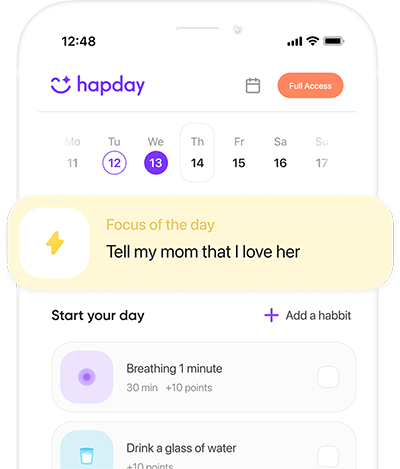Table of Contents
- What is Autism Spectrum Disorder?
- Challenges Faced by Individuals with ASD
- Effective Solutions for Managing ASD
- Supporting Families of Individuals with ASD
- Promoting Awareness and Inclusion
- Wrapping it up
What is Autism Spectrum Disorder?
So, ASD. It’s like this: individuals face hurdles in social interaction and communication, and often show repetitive behaviors. That sounds like a mouthful, doesn’t it? The Centers for Disease Control and Prevention (CDC) chimes in with a stat: about 1 in 54 children in the U.S. is diagnosed with ASD—four times more common in boys than girls. Isn’t that something? The whole “spectrum” thing? Yeah, it means people experience symptoms with varied intensity. Not a one-size-fits-all thing at all.
Challenges Faced by Individuals with ASD
Communication Difficulties
Communication? Man, it’s tough for many with ASD. Some might talk less, and for a fraction—around 25–30% of autistic kids—speech remains elusive even after age four, according to the Journal of Autism and Developmental Disorders. Think about that for a second. You know, others might depend on things like sign language or tech to express themselves. It’s all about finding what works.
Social Interaction Challenges
Social cues, body language… those might as well be ancient hieroglyphs to some folks with ASD. That’s the thing with autism! These hurdles make striking up friendships feel like trying to decipher a mystery novel. The result? Sometimes feeling lonely or left out, sadly. Social dynamics can be so elusive.
Sensory Sensitivities
Ever noticed how sensory overload is a biggie for people with ASD? The National Autistic Society explains how hypersensitivity to sounds, lights, textures—well, you name it—can turn daily life into a rollercoaster of anxiety. Navigating the world with all that noise is no small feat.
Rigid Routines and Behaviors
Predictability is like comfort food for those with ASD. Routine keeps the anxiety monsters at bay, I guess. Change? It’s unsettling… can stir up a sandstorm of stress, perhaps leading to outbursts. And fitting into new situations or environments, like schools or workplaces? That can be a hurdle, for sure.
Effective Solutions for Managing ASD
Early Intervention
Catching it early—before things get tricky—is a mantra at Autism Speaks. When? Ideally before a child turns three. Who knew? Nevertheless, those early interventions—strategies like Applied Behavior Analysis (ABA) and speech therapy—do wonders. They open doors to improved language, cognitive, and social skills.
Tailored Education Plans
You gotta hand it to Individualized Education Programs (IEPs). They cater to the learning needs of each child with ASD. It’s like customizing your playlist, but for education. With input from educators and healthcare pros, these plans set the stage for meeting personal goals.
Sensory-Friendly Environments
Want to lend a helping hand? Craft sensory-friendly spaces. Imagine rooms with minimal noise, controlled lighting, and cozy quiet zones. Such tweaks not only ease anxiety but also make environments inviting and conducive to learning.
Technology Aids
Wow, tech really pulls its weight! For non-verbal folks, apps and devices that flip text to speech or offer visual cues are game-changers. It’s all about empowering communication, one beep or icon at a time.
Social Skills Training
Ever heard of social skills training? Programs that work with folks on the spectrum, teaching them to read emotions, grasp social hints, and master the art of convo. Incredibly, the Journal of Autism and Developmental Disorders reports solid gains in social competence from these initiatives.
Supporting Families of Individuals with ASD
Community Support
Isolation got you down? Take a chance on community support groups. They’re a boon for families dealing with ASD, creating networks of camaraderie and shared experiences. Plus, they’re a treasure trove of local resources and insights.
Access to Professional Guidance
Having a go-to autism specialist—now that’s crucial for families. Regular check-ins help keep tabs on progress and refine strategies to suit each person’s needs. It’s like having a pacesetter on this marathon journey.
Educational Workshops
Ever been to an ASD workshop? They dish out helpful tactics for taming daily challenges, covering everything from behavior to social interaction strategies. They’re like an ace up your sleeve.
Promoting Awareness and Inclusion
Media Representation
Getting ASD rep right in media is non-negotiable. Something refreshing about seeing diverse, real narratives—like a balm over old stereotypes. Shows and films that nail this have the power to reshape understanding.
Educational Campaigns
Picture this: educational campaigns in schools and workplaces. They’re wake-up calls for empathy, engaging peers, and reducing stigma. By spreading the word, these efforts nurture supportive dynamics that benefit everyone.
Policy Advocacy
Champion the cause! Pushing for policies that support the ASD community paves the way for better service access, funded research, and laws upholding their rights. Advocacy is no small act.
Wrapping it up
Unearthing the essence of Autism Spectrum Disorder means recognizing all those hurdles and rolling out the solutions that uplift. With strategies like early intervention, tailored education, tech aids, and communal backing, imagine the communities we could foster! Thanks to advocacy and awareness, not only do individuals on the spectrum get a fair shot at thriving, but society at large grows richer for it.
For more insights on handling ASD and boosting mental wellness, check out Hapday.

